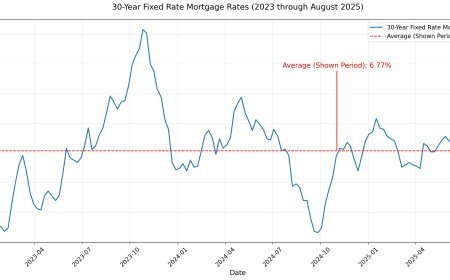Investment Portfolio Diversification: Beyond Stocks and Bonds
Most investors think diversification means owning different stocks and maybe some bonds, like having both Apple and Microsoft in their portfolio somehow protects them from market downturns. This surface-level approach to diversification is like wearing a raincoat in a hurricane—it provides some protection, but when the real storm hits, you realize you needed much more comprehensive preparation. True diversification involves spreading risk across asset classes, geographic regions, investment styles, and even time periods in ways that can actually protect and grow your wealth during various market conditions. The challenge is that effective diversification often feels counterintuitive, requiring you to own investments that seem boring or even contradictory to your main investment thesis.

In This Article:
- True Diversification vs. False Security: Why owning 50 tech stocks isn't actually diversified and what real protection looks like.
- Asset Class Diversification: Understanding how different investments behave during various economic conditions.
- Geographic and Currency Diversification: Protecting against domestic economic problems through international exposure.
- Alternative Investments: REITs, commodities, and other assets that don't move with traditional markets.
- Rebalancing and Maintenance: How to maintain your diversification as markets change and your portfolio grows.
True diversification involves spreading risk across asset classes, geographic regions, investment styles, and even time periods in ways that can actually protect and grow your wealth during various market conditions. The challenge is that effective diversification often feels counterintuitive, requiring you to own investments that seem boring or even contradictory to your main investment thesis.
Understanding Correlation and Risk
Effective diversification requires understanding how different investments move in relation to each other, measured by correlation coefficients that range from -1 to +1. Investments with correlations near +1 move in the same direction, providing little diversification benefit, while those with correlations near -1 move in opposite directions, offering excellent diversification potential.
The problem with most portfolios is that they contain investments with high correlations disguised as diversification. Owning stocks from different sectors might seem diversified, but during market crashes, most stocks fall together regardless of their industry. Similarly, growth stocks and value stocks often correlate more highly during stress periods than their historical averages suggest.
True diversification requires identifying investments that respond differently to various economic conditions. While stocks generally perform well during economic growth periods, bonds often outperform during recessions. Real estate investment trusts (REITs) may provide income during low-interest-rate environments, while commodities can protect against inflation when other assets struggle.
Understanding the underlying drivers of investment returns helps you build portfolios that respond differently to various scenarios. Stocks respond to corporate earnings and economic growth, bonds react to interest rates and credit conditions, and commodities fluctuate with supply and demand dynamics that often have little to do with traditional financial markets.
Asset Class Diversification Strategies
Building a truly diversified portfolio requires exposure to multiple asset classes that respond to different economic conditions and market forces. Domestic stocks provide growth potential and liquidity but offer limited protection during broad market declines. Adding international stocks provides geographic diversification but may not reduce volatility as much as expected due to increasing global market correlations.
Fixed-income investments serve multiple roles in diversified portfolios beyond simple risk reduction. Government bonds provide safety and deflation protection, while corporate bonds offer higher yields with credit risk. Treasury Inflation-Protected Securities (TIPS) specifically guard against inflation, and international bonds add currency diversification to your fixed-income allocation.
Real estate investments through REITs or direct property ownership provide inflation protection, income generation, and exposure to an asset class with different return drivers than stocks and bonds. Real estate often performs well during inflationary periods when other assets struggle, though it can be sensitive to interest rate changes and economic cycles.
Commodity investments through funds or individual commodities provide inflation protection and diversification benefits, though they can be volatile and don't produce income like stocks or bonds. Precious metals like gold often serve as safe havens during market stress, while energy and agricultural commodities respond to supply and demand fundamentals largely independent of financial markets.
Geographic and Currency Diversification
Limiting investments to your home country creates unnecessary concentration risk, as domestic economic problems can devastate even well-diversified domestic portfolios. International diversification provides exposure to different economic cycles, currencies, and market conditions that may not correlate perfectly with domestic markets.
Developed international markets offer similar regulatory protections and market efficiency as domestic markets while providing exposure to different economic conditions and currencies. European, Japanese, and other developed market stocks often have different sector compositions and economic drivers than U.S. markets.
Emerging market investments provide higher growth potential and further diversification benefits but come with increased volatility and political risks. These markets often have different economic cycles and may perform well when developed markets struggle, though they can also experience severe downturns during global stress periods.
Currency diversification occurs naturally through international investments but can be enhanced through currency-hedged funds or direct currency investments. While currency fluctuations add volatility to international investments, they also provide diversification benefits and potential protection against domestic currency weakness.
Alternative Investment Considerations
Alternative investments can provide diversification benefits beyond traditional stocks and bonds, though they often come with higher fees, lower liquidity, and increased complexity. These investments may include private equity, hedge funds, commodities, collectibles, or other non-traditional assets.
Real Estate Investment Trusts (REITs) offer accessible real estate exposure with daily liquidity and professional management. Different REIT types focus on various property sectors like residential, commercial, or industrial real estate, each with different risk and return characteristics.
Commodity investments can provide inflation protection and diversification, though they don't produce income and can be highly volatile. Commodity funds offer exposure to broad commodity baskets or specific sectors like energy, metals, or agriculture.
Master Limited Partnerships (MLPs) provide exposure to energy infrastructure with attractive income potential, though they come with complex tax implications and sector concentration risks. These investments often perform differently than traditional stocks and bonds but require careful consideration of their unique characteristics.
Time Diversification and Dollar-Cost Averaging
Diversifying across time through regular investment schedules can reduce the impact of market timing and volatility on your portfolio. Dollar-cost averaging involves investing fixed amounts regularly regardless of market conditions, potentially reducing the average cost of your investments over time.
This approach works particularly well for volatile investments where timing the market is difficult or impossible. By investing consistently over time, you purchase more shares when prices are low and fewer when prices are high, potentially improving your average purchase price.
However, dollar-cost averaging isn't always optimal, particularly when you have lump sums to invest. If markets generally trend upward over time, investing lump sums immediately often produces better results than spreading purchases over extended periods.
Portfolio Construction and Maintenance
Building a diversified portfolio requires balancing theoretical optimization with practical constraints like investment minimums, tax implications, and management complexity. Start with broad, low-cost index funds that provide instant diversification within asset classes before adding more specialized investments.
Asset allocation decisions have more impact on portfolio returns than individual investment selection, making it crucial to establish appropriate target allocations for different asset classes based on your risk tolerance, time horizon, and financial goals.
Regular rebalancing maintains your target allocations as different investments perform differently over time. This process forces you to sell high-performing assets and buy underperforming ones, which can be psychologically difficult but is essential for maintaining diversification benefits.
Tax considerations can significantly impact diversification strategies, particularly in taxable accounts. Tax-efficient funds, asset location strategies, and tax-loss harvesting can help minimize the tax drag on your diversified portfolio.
Common Diversification Mistakes
Over-diversification can reduce returns without providing meaningful risk reduction, particularly when adding investments with high correlations to existing holdings. Focus on adding investments that provide genuine diversification benefits rather than simply increasing the number of holdings.
Home bias leads many investors to overweight domestic investments relative to global market capitalizations. While some home bias may be appropriate due to currency and familiarity factors, extreme domestic concentration creates unnecessary risk.
Neglecting to rebalance allows successful investments to dominate your portfolio over time, reducing diversification when you might need it most. Regular rebalancing maintains your intended risk profile and can improve long-term returns.
Chasing performance by abandoning diversification during strong market periods often leads to poor timing and reduced returns when markets change direction. Maintaining discipline during both good and bad market periods is essential for diversification success.
Effective diversification requires understanding how different investments behave under various conditions and building portfolios that can weather different economic scenarios. While perfect diversification is impossible, thoughtful asset allocation across multiple dimensions can significantly improve your portfolio's risk-adjusted returns and provide more consistent performance over time.
What's Your Reaction?
 Like
0
Like
0
 Dislike
0
Dislike
0
 Love
0
Love
0
 Funny
0
Funny
0
 Angry
0
Angry
0
 Sad
0
Sad
0
 Wow
0
Wow
0








































